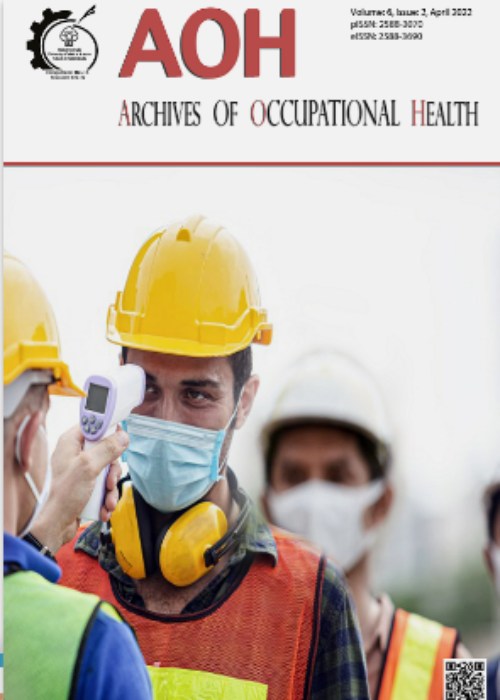Relationship between Mental Workload Index and Work Ability Index in a Food Industry
Author(s):
Article Type:
Research/Original Article (بدون رتبه معتبر)
Abstract:
Background
Spending a significant part of the daily in workplace has led to reduction in the time of rest and recreation of people. Therefore, considering the importance of the potential effect of mental work load on work ability, the present study was conducted to determine the relationship between mental workload and work ability in workers of a food industry.Methods
This cross-sectional study performed on 40 workers in a food industry in Qom province, Iran in 2017. Three demographic questionnaires, NASA-Tlx mental workload index and work ability index (WAI) were used for data collection. Finally, data were analyzed using SPSS software.Results
The results obtained from examining the relationship between work ability index and mental workload index in the studied industry showed high workload index score, however, there was no significant relationship between these two indexes (P = 0.07). results of regression analysis showed that only age of people has a significant relationship with the results of WAI.Conclusion
The mental workload index among workers of food industry was very high, which can be attributed to strict supervision due to the importance of food hygiene. High mental workload can affect human error and work efficiency of the worker. Keywords:
Language:
English
Published:
Archives Of Occupational Health, Volume:2 Issue: 1, Jan 2017
Pages:
75 to 97
https://www.magiran.com/p1781959
سامانه نویسندگان
مقالات دیگری از این نویسنده (گان)
-
The parallel effect of correlated color temperature and illumination level on alertness and cognitive performance: a multi-measure study
Taleb Askaripoor, Majid Motamedzade*, Rostam Golmohammadi, Mohammad Babamiri, Maryam Farhadian, Hamed Aghaei, Mohammad Ebrahim Ghaffari, Elahe Kazemi, Mehdi Samavati
Journal of Health and Safety at Work, -
Assessing the Mental Workload of staff in a Bank in Hamadan by NASA-TLX Method
Zohreh BAKHSHI*, Majid MOTAMEDZADE, Maryam FARHADIAN
Journal of ccupational Hygiene and Health Promotion,



